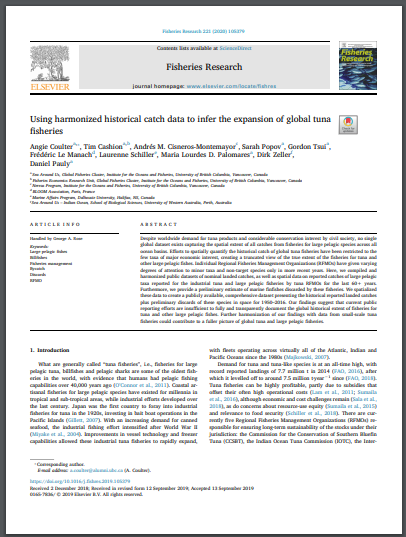
Despite worldwide demand for tuna products and considerable conservation interest by civil society, no single global dataset exists capturing the spatial extent of all catches from fisheries for large pelagic species across all ocean basins. Efforts to spatially quantify the historical catch of global tuna fisheries have been restricted to the few taxa of major economic interest, creating a truncated view of the true extent of the fisheries for tuna and other large pelagic fishes. Individual Regional Fisheries Management Organizations (RFMOs) have given varying degrees of attention to minor taxa and non-target species only in more recent years. Here, we compiled and harmonized public datasets of nominal landed catches, as well as spatial data on reported catches of large pelagic taxa reported for the industrial tuna and large pelagic fisheries by tuna RFMOs for the last 60+ years. Furthermore, we provide a preliminary estimate of marine finfishes discarded by these fisheries. We spatialized these data to create a publicly available, comprehensive dataset presenting the historical reported landed catches plus preliminary discards of these species in space for 1950–2016. Our findings suggest that current public reporting efforts are insufficient to fully and transparently document the global historical extent of fisheries for tuna and other large pelagic fishes. Further harmonization of our findings with data from small-scale tuna fisheries could contribute to a fuller picture of global tuna and large pelagic fisheries.












